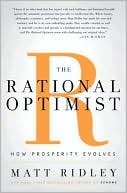Think of it this way. You don’t expect to get better and better at walking in each successive generation – or breathing, or laughing, or chewing. For Palaeolithic hominids, hand-axe making was like walking, something you grew good at through practice and never thought about again. It was almost a bodily function. It was no doubt passed on partly by imitation and learning, but unlike modern cultural traditions it showed little regional and local variation. It was part of what Richard Dawkins called ‘the extended phenotype’ of the erectus hominid species, the external expression of its genes.
Welcome back. Just a moment while we sign you in to your Goodreads account.


